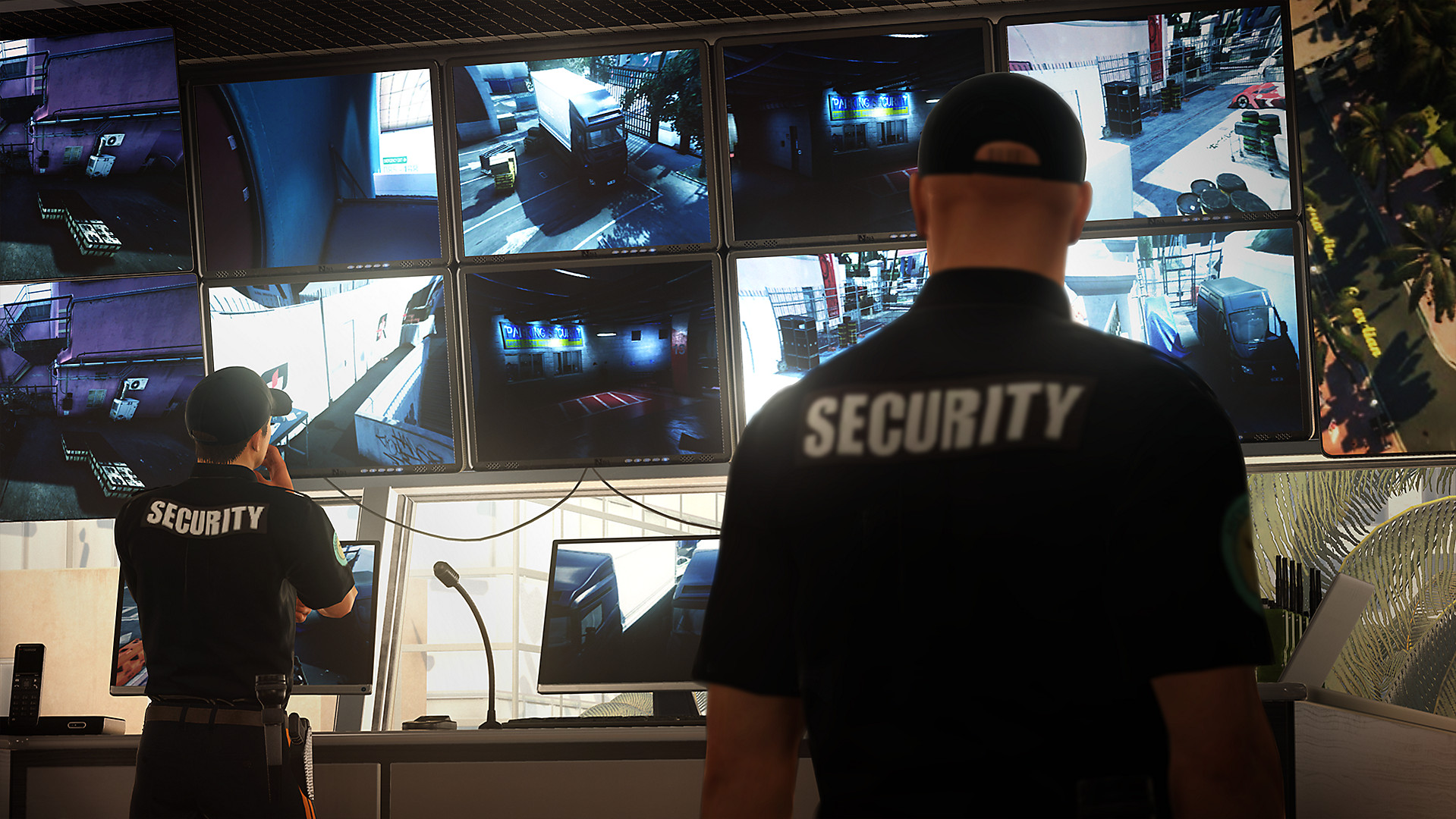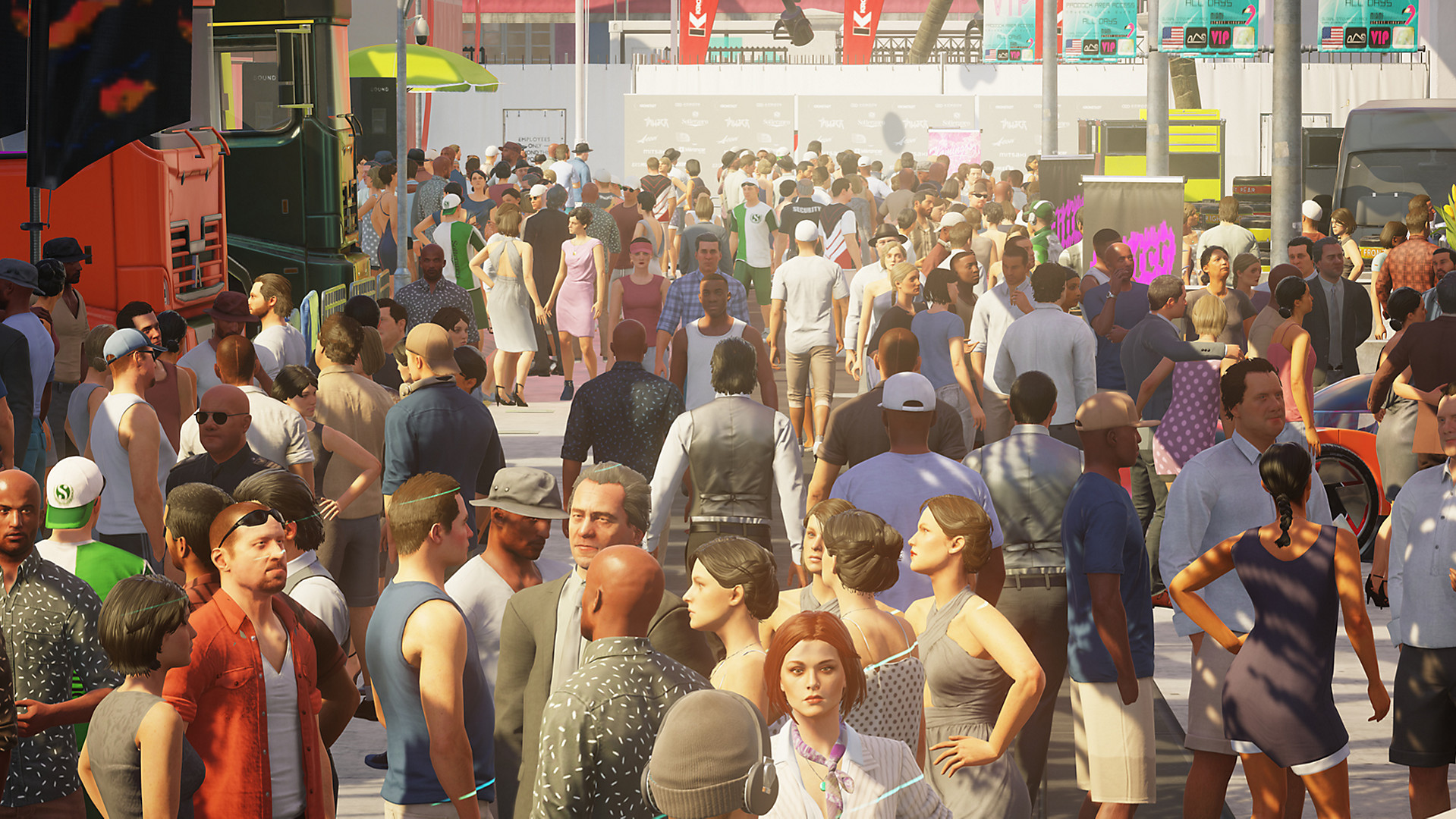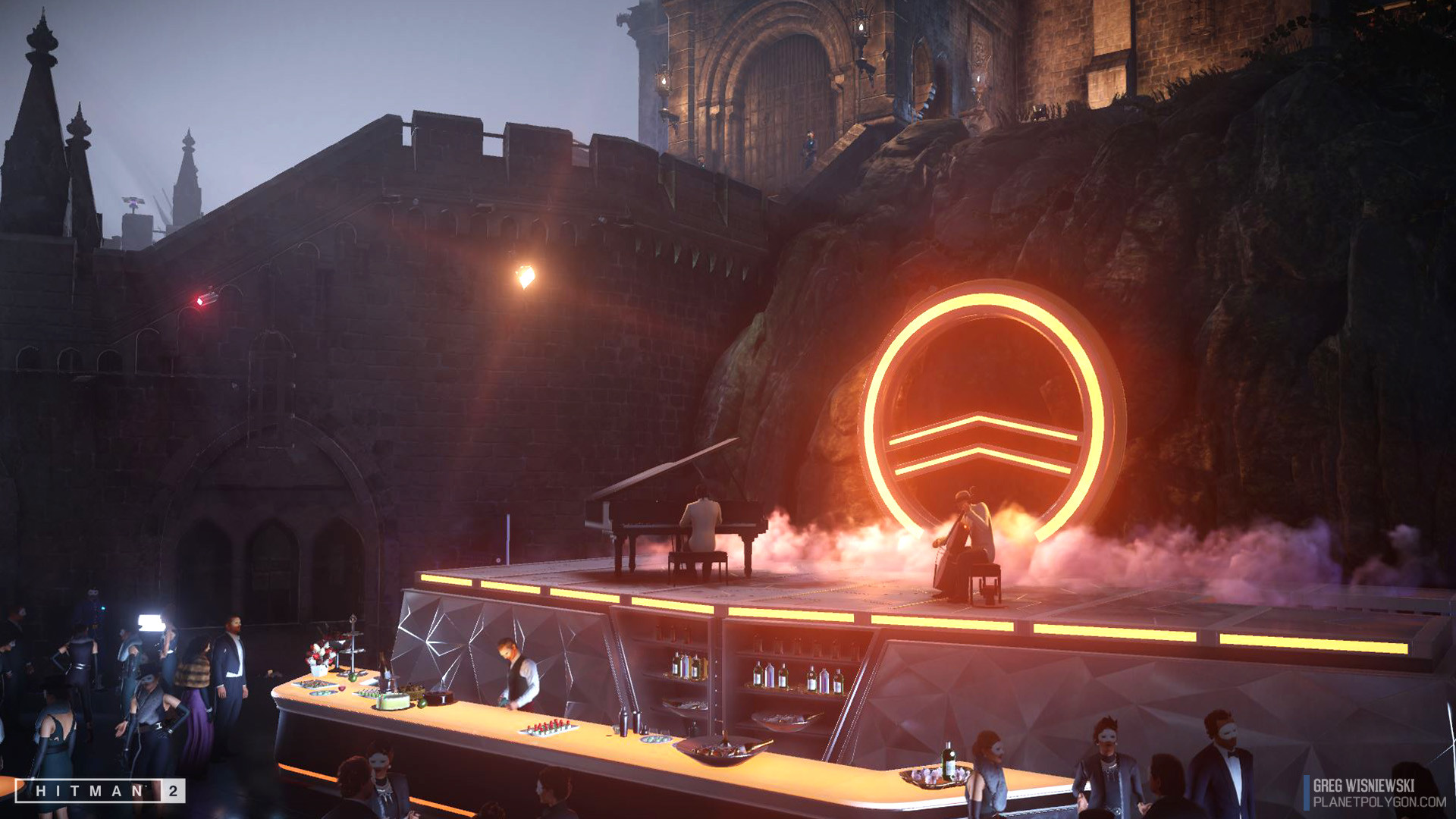Postscript is Cameron Kunzelman’s weekly column about endings, apocalypses, deaths, bosses, and all sorts of other finalities.
Spoilers ahead for Hitman 2’s final level.
Videos by VICE
The final mission in Hitman 2 is about the end of the world. It isn’t pitched that way, of course. It’s given to us as an assassination mission with a little bit of complication: Agent 47 needs to kill two sisters during a gala event in which the projects of a shadowy organization are being pitched to the members of that organization. Think of it as a kind of Illuminati open house.
What they don’t tell you up front is that this Illuminati open house is all about the apocalypse. These people, the aristocracy and the oil magnates and the hidden movers and shakers behind the curtains of existence, are concerned about climate change. They’re looking at a way of surviving the absolute limit point to the planet. The characters who run the open house, the Washington sisters, are of this class of future-oriented power players. The sisters want this world of archvillains to modernize, to green their practices, and to help stave off the climate crisis. They are making a bid for making the world more stable, more predictable. But the majority of the people here don’t think that’s possible. They’re looking for an out. Antarctic bunkers. Brain archives. Spaceward escapes. Above all, they’re looking to dodge the coming catastrophe.
What they don’t know is that the catastrophe is walking among them. I don’t mean this ironically, and I’m not saying it with the sly smile of the marketing team member who has figured out the to sell Agent 47’s violence in just the right way. In fact, I mean “catastrophe” in a fairly limited sense: the way that singularity theory conceives of the moment in which a system that appears stable and predictable swings wildly into a new arrangement.

Imagine watching a distant solar system, with planets rotating cleanly around a star for millions of years without a hiccup. Then, one day, bam: a planetoid slings itself apart, collides with a close pocket of asteroids, and pummels the rings of a gas giant with a million pellets of space rock. A catastrophe like this always forces us to ask ourselves “What happened? What changed?” The paradoxical answer is both everything and nothing. These planets are devastated, changed forever, but not because something new happened. Cosmological physics pulled the one apart, and then the clockwork balance worked against itself to smash the whole operation apart. The catastrophe is one precisely because of its paradoxical nature; the conditions that allow for catastrophe to happen were always there, and yet they did not reveal themselves until the moment of radical change.
The Hitman games are, at their core, about forcing change. They are clockworld worlds in which the player inserts themselves in order to complete a mission that comes from outside of that world. An idyllic suburb chock full of retired secret agents will remain in a stable state until the player chooses to step into the orbit of a non-player character.
In fact, “insert” or “step into” may be the wrong language, because Agent 47 has always been in their orbit. He was a tool they used to maintain their control of the world, like a particularly violent and well equipped space station protecting their worlds of wealth and power. But now he, and you, decide to knock them off course. You slip on a disguise and take their place, returning things to harmony, but with the ultimate goal of undermining the whole operation. You can stop them, or simply slow them down, simply to see them return to the harmony of their route through the level.

In Hitman 2, it takes a lot of work to truly create the catastrophe. It’s easy to get a small level on alert or to make enemy guards begin chasing you, but the full destabilization of a party or a neighborhood or a village is harder than it seems. These places are resilient when it comes to the player’s ability to disrupt the cycles that sustain them.
Going to the Illuminati open house is a lesson in that same kind of resilience. These are the wealthiest of the wealthy, the most powerful of the powerful, and they’re concerned about what is going to happen to that wealth and power once things start to go south. And, to be clear, they think that things on the planet Earth are changing for the worse. One project that we can see is called Hyperborea. In antiquity, Hyperborea was simply the far north of Europe with its chilling climate. For the figures of Hitman 2 it is the possibility of creating vast city bunkers that can resist the elements. The big pitch is that you can build walls against the future, and the richest ones among us might get to cower behind those walls. There are other projects. Cryogenic freezing is claiming to save the self against the coming tide of death. Uploading brains into a cloud offers solace for those who might die behind those erected walls from before yet live on in processing power.
One NPC laments that she cannot manage to change project teams. She no longer wants to be involved in cryogenics. Instead, she wants to embrace the Titan mission, which has the goal of creating a space-faring colony that might leave the Earth behind. She asserts that this would fix all of the problems of Earth. By leaving the mother planet in the dust, something new could be produced. The man she is having a conversation with tells her that she needs to temper her plans and expectations. The Titan mission is a 100 year plan. It is for the deeper future.

And yet that’s the selling point. The wealth afforded to these people at this open house affords them the ability to consider deeper future. The average person is stuck in the shallows of next week, next month, next year. These people, in their costumes at this island castle party, can plan for the next generation. And the next. And the next.
Knowing that the catastrophe is coming doesn’t change the actions in the present. These people still come to this party, and when they enter the logic of the Hitman game, they create those little orbits and circuits that the player can interact with. Their ability to hold off the catastrophe in their mind is what creates “gameplay.” Their programmed, very human, capacity to want to go to a party as the world crumbles around them on a time scale that is just a little bit too big to be grasped is what makes this game playable. No one is screaming about a world that’s on-track for drowning and burning at the same time in the same way that everyone at your grocery store isn’t constantly buying out all the shelf-stable goods to prepare for the oncoming food distribution collapse.
What does make them panic, though, is the catastrophe of Agent 47. When he makes his appearance, it is dramatic. People die. Panic ensues. The reality of a death sometime becomes the reality of a death maybe right now, and people run, lock themselves down, and send security guards and private military members to destroy the eternal Hitman.

On the castle island, with its sales gala for apocalyptic technologies, there are two kinds of catastrophe. One is Agent 47 and the other is the oncoming climate disaster. Both erupt out of the placid conditions of things happening, unwelcome, uncalled for. When Agent 47 comes for these cartoon characters of real-world figures who might survive the real-world conditions that are going to put strains on global supply chains and the viability of our current system of human and resource organization, we can imagine a small moment of comeuppance.
With more than a little irony, Agent 47’s assassination of the Washington sisters prevents them from their project to abandon fossil fuels and to help save the world. Score one for the good guys who just want to live after the end of the world.
Yet the other catastrophe is still latent in the system. Temperatures rise, trade passages open, new oil wells are dug, vacation spots become viable, farmland appears in more northern climes, and we can see the great serpent of history stretching backward and forward as far as the eye can see. A system that craves stability, and yet contains the conditions of its own destruction. The catastrophe, prepared for, yet unseen until the last possible instance.




